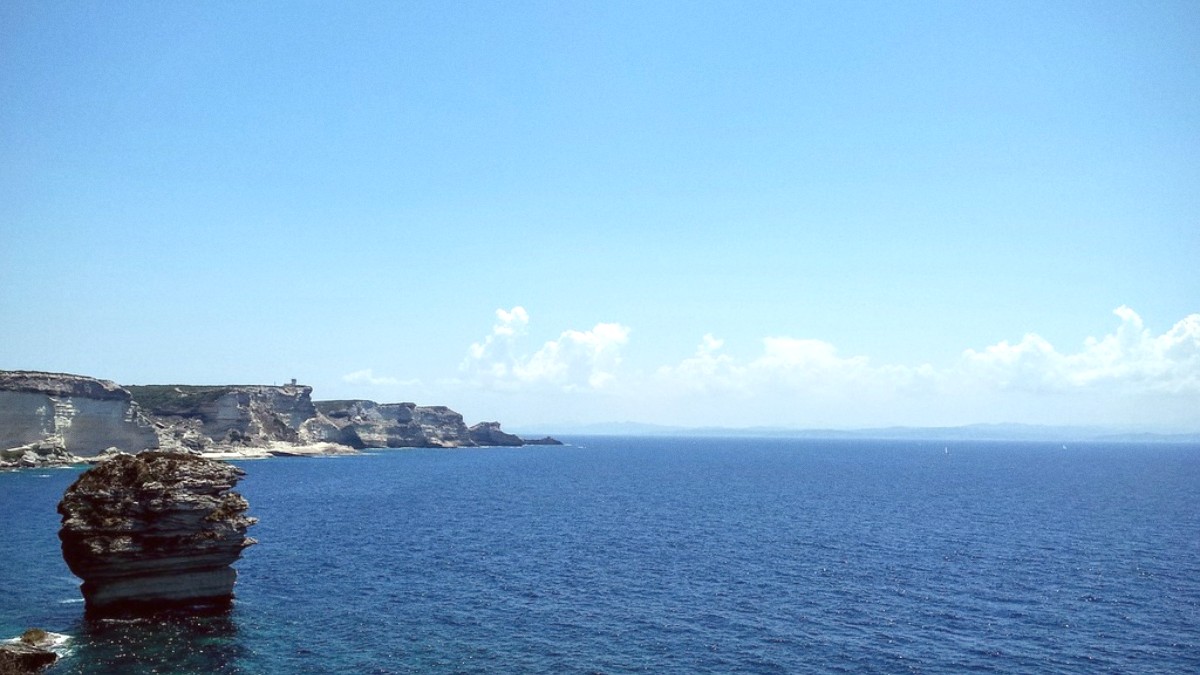
Corsica, France
Corsican cuisine shows a distinct fusion of influences. Its Italian heritage appears in pasta dishes and olive oil, while French methods and focus on fresh produce also exist.
The island's history of relative isolation formed its culinary practices. Corsicans depended on what the land and sea offered, fostering a cuisine rustic and deeply connected to its environment.
Wild Boar (Sanglier) in hearty stews. Cured Pork Products (Charcuterie): coppa, lonzu, figatellu, prisuttu.
Brocciu (fresh sheep/goat's whey cheese), Tomme Corse and Sartinese (harder, aged cheeses).
Fresh fish, mussels, oysters, and sea urchins (seasonal) from Bonifacio's coastal location.
A platter of local cured meats, including coppa (cured pork loin), lonzu (cured pork fillet), figatellu (liver sausage), and prisuttu (smoked ham).
Find at: Traditional Corsican restaurants and local delis (épiceries fines).
Wild boar stew. A hearty, slow-cooked dish with tender boar meat braised in red wine and local herbs, typically served with polenta or pasta.
Find at: Traditional inland or mountain-style restaurants, also some Bonifacio eateries.
This fresh, soft cheese from sheep or goat's whey offers a delicate, slightly tangy flavor. It is a PDO status.
Find at: Markets, local cheese shops, and many restaurants, fresh or in savory dishes/desserts like fiadone.
Figatellu sandwich (grilled liver sausage in crusty bread, cooler months) and sweet or savory crêpes are available.
Corsican Wine, Pietra (chestnut flour beer), Cap Corse Mattei (aperitif), Myrte (myrtle berry liqueur), Eau de Vie (fruit brandies).
Bonifacio is a few upscale restaurants, some with stunning sea views overlooking the cliffs. These establishments feature refined Corsican or Mediterranean cuisine.
Many options exist in both the Old Town and the Marina. These places offer a good balance of quality, atmosphere, and price.
For economical meals, seek out smaller cafes, boulangeries (bakeries), and snack bars.
The local market is excellent for fresh produce, local cheeses, charcuterie, honey, and other Corsican specialties. Ideal for self-catering or assembling a picnic.
Check with the tourist office for its location and operating days.
Italian cuisine (pizza and pasta) is widely available due to proximity and historical ties. Beyond that, international options are limited.
Focus remains on French and Corsican dishes.
Many restaurants accommodate vegetarians. Look for salads, omelets with local cheese, vegetable tarts, or pasta dishes.
Vegan options are more challenging. Specify your needs clearly. Focus on salads, vegetable sides, and fruit desserts.
Very limited availability. Self-catering from supermarkets or opting for vegetarian/fish choices is suitable.
Awareness is growing. Carry a translation card for severe allergies. Inform restaurants in advance. Larger restaurants may accommodate more readily.
Visit the local market early for the freshest produce, cheeses, and charcuterie.
This experience yields authentic products.
Choose family-run restaurants, stay in guesthouses, and purchase products from local artisans.
This fosters direct economic benefit to the local population.
Sample Canistrelli (dry biscuits in various flavors) and Gâteau à la Châtaigne (dense chestnut cake).
Figatellu is freshest in cooler months. Brocciu cheese is seasonal, available from November/December through May/June.
Vegetarian choices can be found. Vegan options present more challenges. It is suitable to clearly state your dietary needs.
Awareness of gluten-free ("sans gluten") and other allergies expands in France. For severe allergies, carry a translation card.
Halal and Kosher food availability is very limited. It is suitable to self-cater from local supermarkets.
Do not hesitate to ask questions about ingredients when dining out.
Clear communication benefits your dining experience.
Using simple French phrases like "Est-ce qu'il y a...?" (Is there...?) or "Je ne peux pas manger..." (I cannot eat...) is appreciated.
This small effort connects you more genuinely with locals.
Bonifacio's cuisine emphasizes fresh, local, and seasonal ingredients, reflecting the island's bounty.
The historical context of self-sufficiency shapes a rustic, resourceful, and deeply connected culinary style.
Coastal areas like Bonifacio focus on seafood, while inland areas spotlight cured meats and mountain cheeses.
Exploring Bonifacio's culinary landscape promises a journey through diverse flavors and traditions.